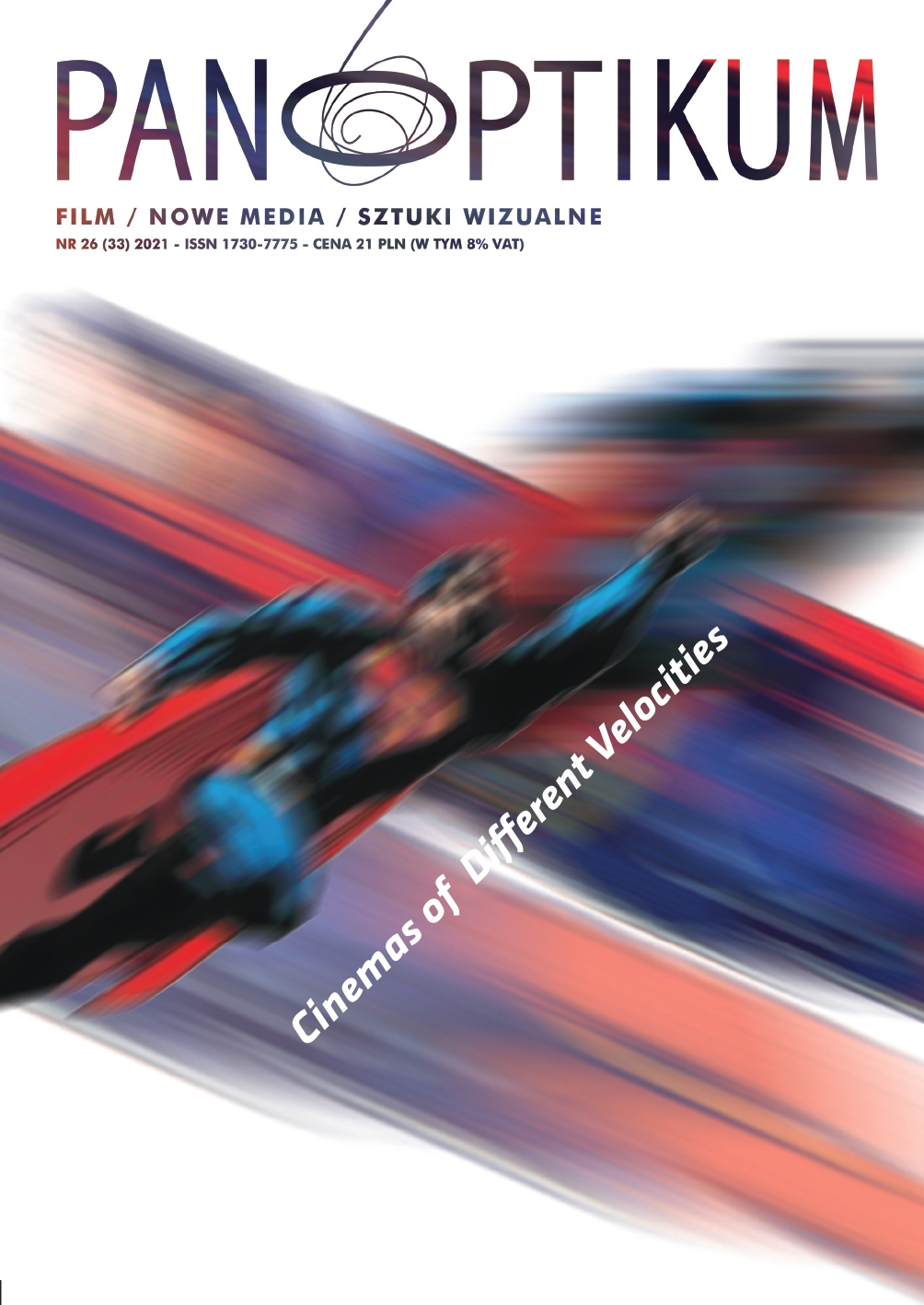On the Margin of ”Satantango”. Some Remarks on Slow Cinema
DOI:
https://doi.org/10.26881/pan.2021.26.12Słowa kluczowe:
Satantango, slow cinema, discontinuity, anthropocentric gaze, verfremdung effectAbstrakt
Athough Satantango by Bela Tarr is usually regarded as a perfect representative of slow cinema and certainly deserves this reputation, it is worth remembering that it shares some features with other currents of modern cinema. Its networkish structure and unreliable narration place it close to puzzle films; its close affinity with the Krasznahorkai novel, on which it is based, makes it a form of impure – that is – hybrid cinema; due to an accumulation of evil deeds, tragic and sensational events, it resembles films of action. But, first of all, it is a paramount example of slow cinema, and as such it enables one to grasp the essential features of this genre. According to certain views, often built on the foundation of Andre Bazin theory, slow cinema imitates natural human perception and therefore is inherently realistic. This is not true, though. Instead of a reality effect, slow cinema produces rather a verfremdung effect, which in turn enhances the big potential of slow cinema in inducing transcendental or religious states in a viewer’s mind. Satantango explores this potential, drawing on the religious connotations of Krasznahorkai novel.
Downloads
Bibliografia
Aumont, J. (2014). Montage, Translated by Mimothy Barnard, Montreal: Caboose.
Bazin, A. (1958). The Evolution of Film Language, http://www.newwavefilm.com/about/ evolution-of-film-language-bazin.shtml. (accessed on 19 August 2021).
Berg, Ch. R. (2006). A taxonomy of Alternative Plots in Recent Films: Classyfying the ”Tarantino Effect”. ”Film Criticism”, Fall, 31, ½.
Bergson, H. (1911). Matter and Memory. Paul, N. M., Palmer, W. S. (trans). London: George Allen and Unwin [https://antilogicalism.com/wp-content/uploads/2017/07/ matter-and-memory.pdf. (accessed on 19 August 2021).
Bordwell, D. (2008a). Mutual Friends and Chronologies of Chance, in: idem: Poetics of Cinema, New York and London: Routledge.
Bordwell, D (2008b). Convention, Construction, and Cinematic Vision. in idem: Poetics of Cinema, Routledge.
Buckland, W. (2009). Introduction: Puzzle Plot. in Puzzle Films: Complex Storytelling in Contemporary Cinema. Buckland, W. (ed.). Oxford: Wiley-Blackwell Publishing.
Eichenbaum, B. Problems of Cine-Stylistics, in “Russian Poetics in Translation”, vol. 9 The Poetics of Cinema.
Gibbs, J., Pye, D. (2017). Introduction 1: The Long Take – Critical Approaches. in John Gibbs&Douglas Pye, The Long take. Critical Approaches, London: Palgrave Macmillan.
Koschany, R. (2017). Kalejdoskop możliwości. Filmowe narracje sieciowe oraz ich filozoficzne interpretacje. in Możliwość i konieczność w kulturze, Pawłowska-Jądrzyk, B. (ed.). Warszawa: Wydawnictwo Naukowe UKSW.
Kovács, A.B. (2013). The Cinema of Bela Tarr. The Circle Closes. London & New York: Wallflower Press.
Marczak, M. (2000). Poetyka filmu religijnego. Kraków: Arcana.
Ostaszewski, J. (2001). O narracji epistemicznie niejednoznacznej : niewiarygodność w kinie gier umysłowych, „Ethos”, no. 34.
Przylipiak, M. (1985), Ewolucja długości ujęcia filmowego. “Kino”, no. 12.
Stańczyk, M., Time Flows: Rhythm in Slow Cinema (in this volume).
Schrader, P. (2018). Transcendental Style in Film. University of California Press.

 Uniwersyteckie Czasopisma Naukowe
Uniwersyteckie Czasopisma Naukowe









